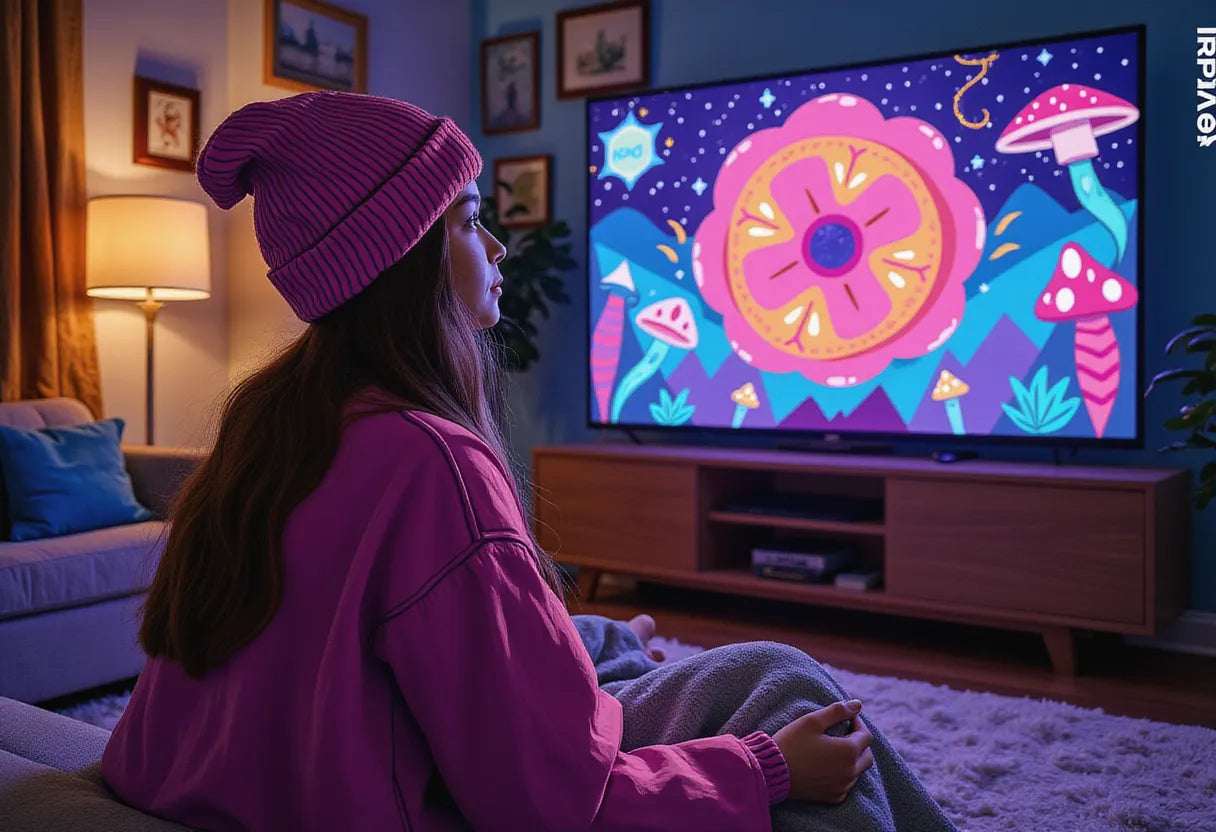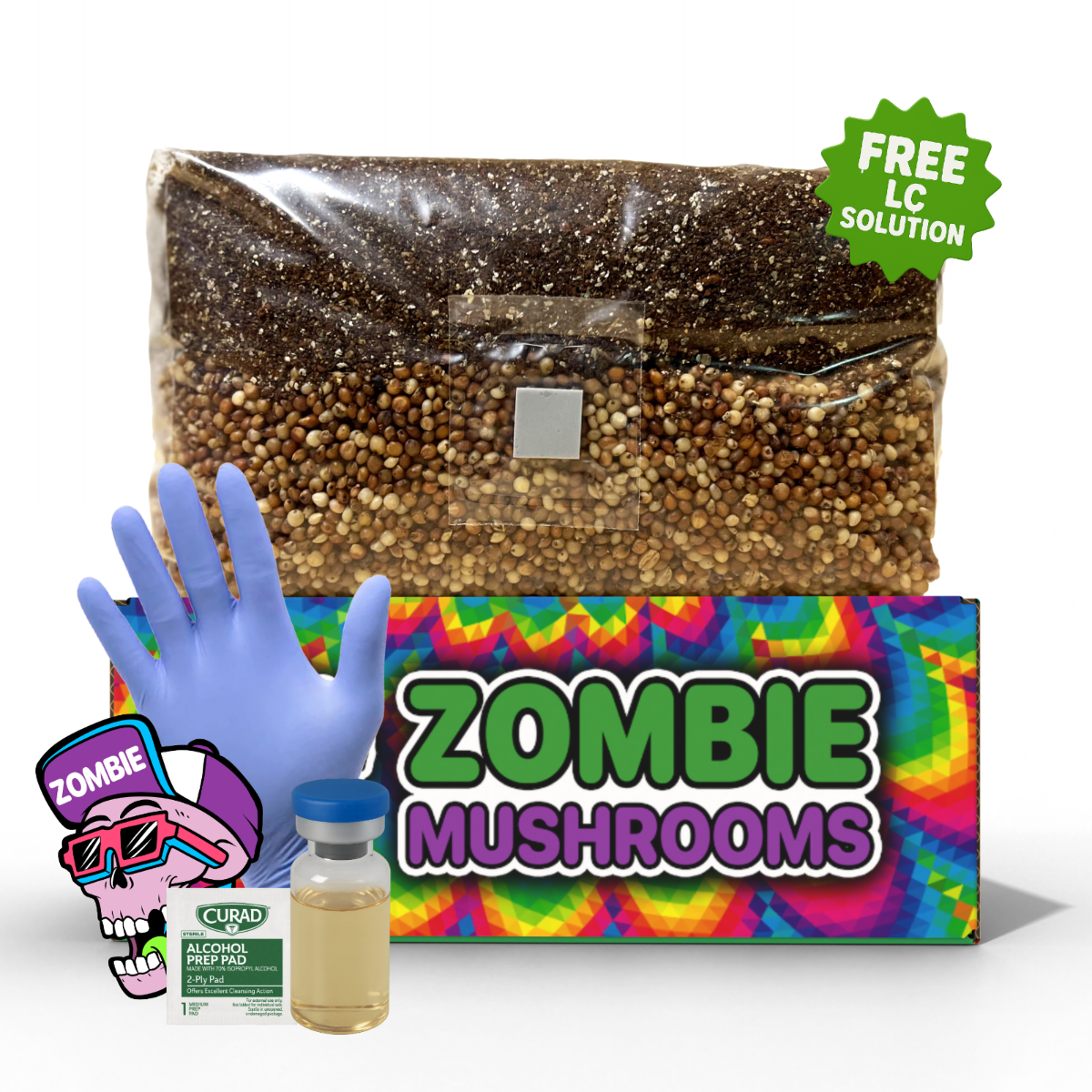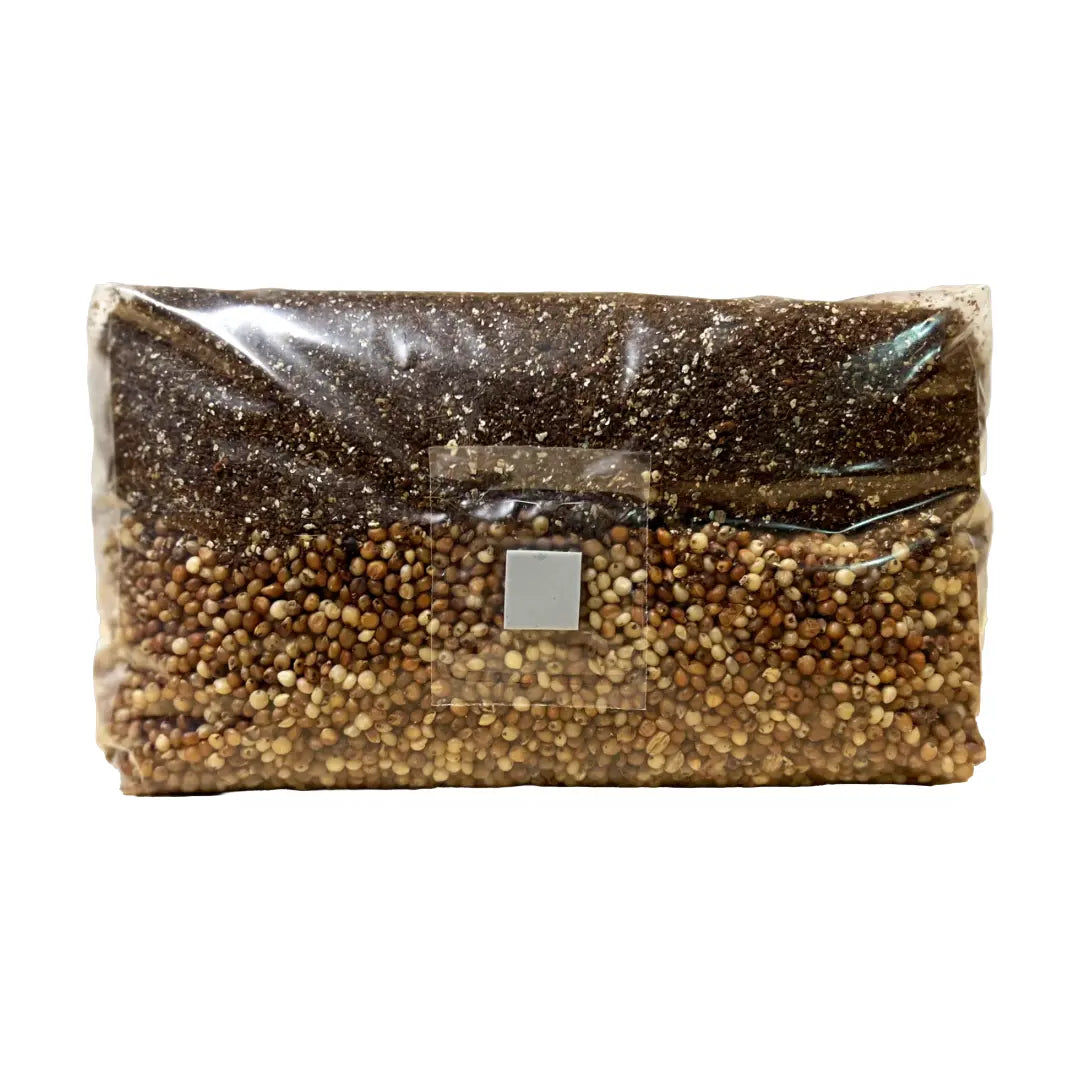Last Updated: April 26, 2025
Few film genres mess with how we see things like trippy movies. These films change your mind by twisting reality, not telling stories in a straight line, and looking at big ideas about life through dream-like visuals and weird stories. When you watch visually trippy movies, it feels like you're in a different state of mind – time gets confusing, reality breaks apart, and how you see things changes a lot. Netflix has a great bunch of these films that can expand your mind, letting you travel to unreal worlds without leaving your couch. And when your mushroom grow bags arrive in the mail, settling in with one of these movies makes it even more of an experience.
This article looks at six of the most interesting trippy movies on Netflix. They were chosen because they can make you question what you see and open your mind. From crazy cartoons to movies that make you think, these films are both fun to watch and give you deep thoughts about life and reality.
What Makes a Movie “Trippy”?
Before we tell you which ones to watch, let's talk about what makes a film "trippy." Trippy movies have some things in common that make them different from regular movies:
-
Weird Visuals: They have unusual visual styles with unreal images, strange angles, and worlds that don't seem real.
-
Stories That Jump Around: The stories don't go in a straight line. They might have time loops, different dimensions, or realities happening at the same time.
-
Deep Ideas: They explore ideas about being aware, who we are, and what reality is.
-
Reality That's Not Real: It's hard to tell the difference between dreams and being awake. They often show hallucinations and things that change how you see things.
All these things together make films that don't just entertain you but also make you think about how you see the world – kind of like when you meditate or have psychedelic experiences.

Light But Mind-Bending: Chill Trippy Movies on Netflix
If you want to see weird realities without getting into dark stuff, these films are easy to get into but still make you think:
1. The Midnight Gospel (Animated Series)
This new trippy animated movie on Netflix mixes philosophical talks that sound like podcasts with unreal, psychedelic images. Created by Duncan Trussell and Pendleton Ward (from Adventure Time), the show is about a space-caster named Clancy who talks to beings from dying worlds about the big questions in life.
Why it’s trippy: The show perfectly combines crazy visuals and deep conversations about life. Each episode puts serious talks about death, being mindful, and forgiveness against a backdrop of really strange cartoons. The colorful, swirling images go well with the deep ideas, making it feel like you're meditating through other dimensions.
The animation style goes from playful to creepy, with complicated patterns and constantly changing scenes that look like the scattered thoughts you have when your mind is altered. Unlike regular cartoons, The Midnight Gospel doesn’t just use its unreal visuals to look cool – they actually show and make the philosophical stuff even better.
2. Cloud Atlas
This ambitious trippy movie from the Wachowskis tells six stories that are connected but happen at different times, from a sea journey in the past to a future after the apocalypse.
Why it’s trippy: Cloud Atlas makes you think because of how it's put together and the ideas it explores. The film keeps jumping between the six storylines, which can be confusing but also makes you think about how everything in the universe is connected. Actors play different characters in different time periods, suggesting reincarnation and that history repeats itself.
The film’s story doesn't go in a straight line, which makes you try to find connections between the different stories. This can feel like déjà vu and recognition, similar to how you might find patterns during psychedelic experiences. Cloud Atlas doesn’t have a lot of obvious hallucinations; instead, it’s trippy because of its complicated structure and how it suggests that time might go in circles instead of a straight line.
3. I Lost My Body
This French trippy animated movie on Netflix is about a severed hand traveling through Paris to find its body. The story also shows flashbacks of the young man who lost it.
Why it’s trippy: The film’s weird point of view – following a hand that’s not attached to a body – immediately makes you feel disconnected. The animation style switches between rough city scenes and warm, personal flashbacks, creating a dream-like feeling as the story jumps between what’s happening outside and what’s happening inside someone’s head.
The hand’s journey becomes more like a symbol, representing the subconscious need to be whole and connected. The film’s thoughts on memory, fate, and who we are make you question what it means to have a body and be aware – similar to when you feel like your boundaries disappear during deep meditation or psychedelic experiences.
Darker Dimensions: Intense Psychedelic Movies on Netflix
If you’re ready to explore the more difficult parts of being aware, these films go deep into big questions about life and darker psychological places:
4. Enter the Void
Gaspar Noé’s visually trippy movie is probably the closest that cinema has come to showing what a psychedelic experience feels like through just filmmaking.
Why it’s trippy: The movie is mostly shot from a first-person view – including when the character blinks and even a floating, detached view after he dies. This literally puts you inside an altered state of consciousness. Set in Tokyo’s neon-lit underworld, the film’s flashing lights, flowing camera movements, and intense colors create an immersive hallucinatory experience.
Inspired by the Tibetan Book of the Dead, the story follows a drug dealer’s consciousness after death as it floats through different levels of existence. The film’s technical achievements – like long, sweeping shots, transitions between scenes that look like tunnels, and flashing light effects – create a continuous psychedelic visual experience that many viewers find genuinely mind-altering.
5. Midsommar
Ari Aster’s folk horror masterpiece surprises you by setting its scary events in the bright, never-ending daylight of a Swedish midsummer festival.
Why it’s trippy: Midsommar is different because of its hallucinatory scenes that make it hard to tell the difference between the film’s already strange reality and what the main character is seeing because she’s on drugs. The community’s ritualistic use of psychedelics drives both the story and the film’s visuals, with flowers that seem to breathe, ground that ripples, and reflections that move on their own.
Unlike most horror films that use darkness to scare you, Midsommar’s bright, overly colorful visuals create a disorienting feeling of unreality. The constant sunlight messes with your sense of time, just like it does for the characters, making the film feel dreamlike. The film’s exploration of grief, belonging, and ritual makes it not just visually trippy but also psychologically complex.
6. The Platform
This Spanish dystopian thriller uses a prison that goes up and down as a strong symbol for how unequal society is and how resources are shared.
Why it’s trippy: While it doesn’t have the swirling colors of other trippy movies, The Platform makes you think in a mind-altering way through its confusing ideas and nightmarish logic. The film’s main idea – a prison where food comes down on a platform from the top, and the people on the higher levels eat everything before it gets to the lower levels – creates a disturbing thought experiment.
The precise, geometric design of the prison, along with the growing desperation and unreal violence as the story goes down to the lower levels, creates a hallucinatory feeling that’s similar to the anxiety you might feel during bad psychedelic experiences. The Platform’s social commentary on capitalism and human nature adds intellectual depth to its strong impact.

Beyond Netflix: Classic Trippy Movies Worth Seeking Out
While we’ve been focusing on trippy movies on Netflix, there are many classic mind-bending films that have defined this genre:
Classic Trippy Movies
-
2001: A Space Odyssey (1968): Stanley Kubrick’s sci-fi masterpiece with its famous Star Gate sequence
-
The Holy Mountain (1973): Alejandro Jodorowsky’s surrealist spiritual journey
-
Eraserhead (1977): David Lynch’s nightmarish exploration of parenthood and industrial anxiety
Trippy Animated Movies Classics
-
Fantastic Planet (1973): René Laloux’s psychedelic sci-fi about human-like beings kept as pets by giant aliens
-
Spirited Away (2001): Hayao Miyazaki’s dreamlike journey through a spirit world
-
Waking Life (2001): Richard Linklater’s rotoscoped philosophical exploration of dreams
Modern Visually Trippy Movies
-
Inception (2010): Christopher Nolan’s dreams-within-dreams thriller
-
The Tree of Life (2011): Terrence Malick’s cosmic exploration of existence
-
Everything Everywhere All at Once (2022): A multiverse-spanning journey through alternate realities
Psychedelic Movies on Netflix: Documentary Edition
If you’re interested in the science and culture of altered states, Netflix has some interesting documentaries:
-
Have a Good Trip: Adventures in Psychedelics (2020): Celebrities share their psychedelic experiences
-
Fantastic Fungi (2019): Explores the magical world of mushrooms and their consciousness-expanding properties
-
How to Change Your Mind (2022): Michael Pollan’s exploration of psychedelic therapy
The Connection Between Trippy Movies and Psychedelic Experiences
Both trippy movies and psychedelic substances can temporarily change how you see things and expand your consciousness. Visually trippy movies are artistic ways of showing altered states – portraying the non-linear, abstract ways psychedelics interact with consciousness through film techniques.
The best trippy movies on Netflix recreate aspects of psychedelic experiences through:
-
Pattern Recognition: Visual designs that repeat and change
-
Synesthesia: Mixing senses (sound becoming visible, colors having texture)
-
Temporal Distortion: Messing with time through editing and how the story is told
-
Boundary Dissolution: Making it hard to tell the difference between characters, realities, or ideas
This similarity explains why many psychedelic movies on Netflix really connect with people who are interested in exploring consciousness. The films offer a safer, easier way to experience changes in reality and perspective similar to what psychedelics do.
How to Enhance Your Trippy Movies Experience
To get the most out of these mind-expanding films:
-
Create the Right Environment: Dim the lights or use soft lighting to make the visuals better
-
Use Quality Audio: Good headphones or speakers will pull you into the sound
-
Minimize Distractions: Turn off your phone and find a quiet place to watch
-
Consider Reflective Pauses: Take breaks between intense scenes to think about what you just saw
-
Comfortable Viewing Position: Being physically comfortable helps you focus mentally
Conclusion: Why Trippy Movies on Netflix Matter
Trippy movies are more than just entertainment – they open doors to seeing things differently. Whether through colorful cartoons, stories that make you think, or disorienting visuals, these films challenge how we normally see things and invite us to look at reality in new ways.
The best trippy movies on Netflix act like tools to expand your mind, giving you chances to question your assumptions, explore altered states, and see reality through different lenses. In a world that often pushes conventional thinking, these mind-bending journeys offer important different viewpoints that broaden our understanding of reality and ourselves.
From animated philosophical journeys to scary hallucinations, psychedelic movies on Netflix continue to push the limits of cinema and expand consciousness – one frame at a time.



